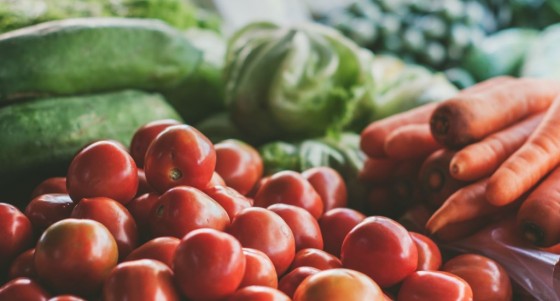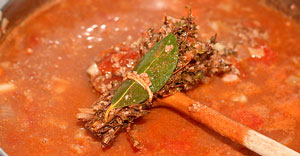
“If you want to love Italian cooking, you have to love the tomato.”
I sat at a table on the platform at the station of Villarosa in central Sicily. The table was covered with a paper cloth and set with a knife, a fork, a side plate and a tumbler. I had bread and wine. A small, scrawny cat sat silently beside me. Sparrows skittered among the metal struts above me. Clouds moved shadows across the tanned and gold hillside beyond. And then came the unmistakable perfume of frying onions and bubbling tomato, rich, velvety, slightly rasping, slightly cloying, carrying the promise of flavour to coat the fat tubes of penne I was going to eat – penne con salsa di pomodoro, salsiccie e ulive. What a beautiful thing the tomato is, I thought.
 Tomatoes: round, squat, tomatoes like gurning faces, plum-shaped, plum-sized tomatoes, grape-shaped, grape-sized, tomatoes the size of baking potatoes. Tomatoes red, orange, green, reddish-orange streaked with green. Shiny, perfect tomatoes, tomatoes cracked and fissured. There are fresh tomatoes, dried tomatoes and tinned tomatoes. There’s polpa, passata, concentrato, doppio concentrato, and ‘strattu, Sicily’s extreme tomato paste. There’s sugo (straight tomato sauce), ragu (tomato and meat sauce) and sugo al carne (tomato sauce in which hunks of pork, veal and/or beef, have been quietly stewed, allowing the meat juices to quietly permeate the vegetable mass). There are even sauces made by roughly chopping raw tomatoes. The culture surrounding tomatoes in Italy surpasses anything in the food universe for variety, ingenuity, and splendour, subtlety and downright deliciousness. ‘It is the lifeblood of Italian food’, writes John Dickie in Delizia, an iconoclastic analysis of Italian food, ‘– some would say of Italians themselves.’
Tomatoes: round, squat, tomatoes like gurning faces, plum-shaped, plum-sized tomatoes, grape-shaped, grape-sized, tomatoes the size of baking potatoes. Tomatoes red, orange, green, reddish-orange streaked with green. Shiny, perfect tomatoes, tomatoes cracked and fissured. There are fresh tomatoes, dried tomatoes and tinned tomatoes. There’s polpa, passata, concentrato, doppio concentrato, and ‘strattu, Sicily’s extreme tomato paste. There’s sugo (straight tomato sauce), ragu (tomato and meat sauce) and sugo al carne (tomato sauce in which hunks of pork, veal and/or beef, have been quietly stewed, allowing the meat juices to quietly permeate the vegetable mass). There are even sauces made by roughly chopping raw tomatoes. The culture surrounding tomatoes in Italy surpasses anything in the food universe for variety, ingenuity, and splendour, subtlety and downright deliciousness. ‘It is the lifeblood of Italian food’, writes John Dickie in Delizia, an iconoclastic analysis of Italian food, ‘– some would say of Italians themselves.’
Continue reading “Golden Apples | An ode to the humble tomato, by Matthew Fort”